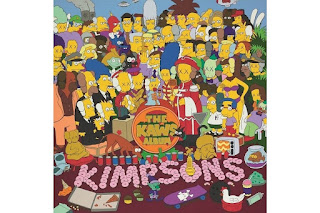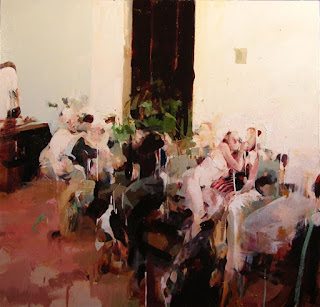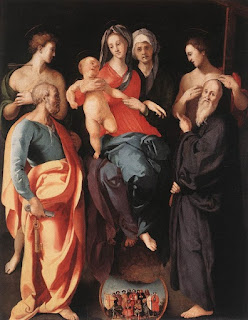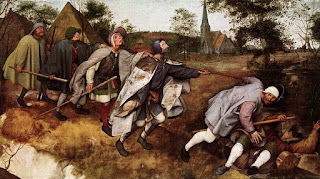Class Exercise
This week you are to explore painting fabric and folds. Fabric and folds offer one two big problems to solve—one is a “drawing” problem and the other a “painting” problem.
The Drawing problem is one of structure, understanding a bit of how folds are made, and how to tackle them. There’s a PowerPoint about the different types of folds that I think will be very helpful. Go through it before you paint.
The Painting problem is one of the texture of the fabric. Different types of fabric look different because of how they REFLECT light. Some fabrics have a glossy sheen, and others are very matte. Some are fuzzy and some smooth, but what is it that makes a surface look fuzzy or smooth? The way the light reflects off of the fabric. To analyze the way light reflects, you need to look at 3 things:
- The amount of contrast between the lights and the darks, both in value and in chroma. A glossy fabric might have lights with a 9 value, and darks with a 2 value, but a matte fabric might only have a 7 to 5 (or 5 to 3, depending on the value of the local color) value range.
- The abruptness of the shift from lights to darks. Glossy, sheeny fabric might have nearly hard edged transitions from bright lights to deep darks, but matte fabrics might have much gentler, softer transitions.
- The actual color (both hue and chroma) of the lights and the darks. They may not just be light or dark versions of the same color. Sometimes the color might shift from bright, orangy reds in the lights to deep violets in the darks. Or bright warm yellow lights to cool, blue-green darks.
If you solve those 3 color problems in addition to the drawing problems, you should be able to make very convincing paintings.
What to actually Paint
I think of this as a not-a-still-life still-life. In other words, even though you will be painting an inanimate subject, you won’t be held to still life conventions. You are to set up drapery of several different types of fabric, being careful to arrange it so there are a variety of types of folds. Make it interesting, elegant, and dynamic. Any non-fabric stuff should be essential to the drapery (see the wooden hand in my demo video). The emphasis of the painting is on fabric textures, though. Don’t be distracted from this!
This will probably be a pretty involved painting. It should also have some scale to it—paint a bit larger than you are comfortable. At least 24x30 or so. Therefore you are welcome to spend two weeks working on it instead of just one. It won’t be due until April 24. See examples below of how different artists deal with fabric and folds. In the last 4 Portraits, notice how the Masters Titian, Sargent, Ingres, and Holbein all handle different types of fabric. Try to analyze what makes them convincing . . .
Demonstration Videos
Examples Images















